Marian Pastor Roces
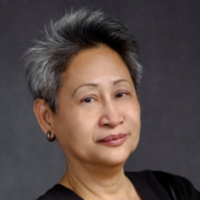 Marian Pastor Roces is an independent curator and critic working from her base in Manila, Philippines, from where she takes up global art and culture circuits as a critic of institutions. Published internationally — notably, her critique of the global biennales, published by the Massachusetts Institute of Technology Press (2000) and by Bergen Kunsthall, Norway (2006)— she enjoys an engaged global readership. Her intellectual work in Cultural Studies sustains her integrative contribution to policy work, which she exercises as partner and co-founder of the think tank, Brain Trust Inc. Pastor Roces' analyses of urbanization and cultural politics contributed an atypical aspect to BTI's Mindanao Peace and Development Plan 2020; and a signal Rural Poverty Alleviation study for the World Bank. This is work that builds on her enduring interest in identity politics and the issues of representation that require exhibition and museum projects to resolve. In 1995, Pastor Roces founded TAO INC, the Philippines' pioneering and only museum and exhibition development corporation. TAO INC curated the establishment of many of the Philippines' significant museums over the past two decades, including the Yuchengco Museum, Museo Marino to the Filipino seafarer, the Museum of Contemporary Art and Design (MCAD) of the College of St. Benilde, Museo Puntong Batangan, the Museum to a History of Ideas of the University of the Philippines Manila, the Centennial period Rizal Shrine in Intramuros (which has been recurated) and the Rizal Shrine in Dapitan, Zamboanga del Norte. Roces is currently curating the establishment of a new museum for the Cultural Center of the Philippines, which she has named 21AM. This museum-in-progress on contemporary art allows her to revisit and vastly upscale her early efforts on indigenous knowledge, as author of the seminal book, "Sinaunang Habi: Traditional Philippine Textiles" (1992); co-curator of "Pahiyas: Philippine Festival" at the Smithsonian Institution, Washington, D.C. (2000); and curator of the Philippine Pavilions for the World Expos in Japan, Spain, China, and currently, United Arab Emirates. Roces continues to write on her long-term research interests in clothing, cities, transitions between old and emergent cultures, museums, and contemporary art — all as studies of the distribution of power. An anthology of 45 years of writing was issued as "Gathering: Political Writing on Art and Culture" by MCAD and Art AsiaPacific; distributed by NUS Press. Her work on this SOAS site issues from Roces' "Global Inventory of Filipiniana Artifacts, Works of Art, and Selected Documents".
Marian Pastor Roces is an independent curator and critic working from her base in Manila, Philippines, from where she takes up global art and culture circuits as a critic of institutions. Published internationally — notably, her critique of the global biennales, published by the Massachusetts Institute of Technology Press (2000) and by Bergen Kunsthall, Norway (2006)— she enjoys an engaged global readership. Her intellectual work in Cultural Studies sustains her integrative contribution to policy work, which she exercises as partner and co-founder of the think tank, Brain Trust Inc. Pastor Roces' analyses of urbanization and cultural politics contributed an atypical aspect to BTI's Mindanao Peace and Development Plan 2020; and a signal Rural Poverty Alleviation study for the World Bank. This is work that builds on her enduring interest in identity politics and the issues of representation that require exhibition and museum projects to resolve. In 1995, Pastor Roces founded TAO INC, the Philippines' pioneering and only museum and exhibition development corporation. TAO INC curated the establishment of many of the Philippines' significant museums over the past two decades, including the Yuchengco Museum, Museo Marino to the Filipino seafarer, the Museum of Contemporary Art and Design (MCAD) of the College of St. Benilde, Museo Puntong Batangan, the Museum to a History of Ideas of the University of the Philippines Manila, the Centennial period Rizal Shrine in Intramuros (which has been recurated) and the Rizal Shrine in Dapitan, Zamboanga del Norte. Roces is currently curating the establishment of a new museum for the Cultural Center of the Philippines, which she has named 21AM. This museum-in-progress on contemporary art allows her to revisit and vastly upscale her early efforts on indigenous knowledge, as author of the seminal book, "Sinaunang Habi: Traditional Philippine Textiles" (1992); co-curator of "Pahiyas: Philippine Festival" at the Smithsonian Institution, Washington, D.C. (2000); and curator of the Philippine Pavilions for the World Expos in Japan, Spain, China, and currently, United Arab Emirates. Roces continues to write on her long-term research interests in clothing, cities, transitions between old and emergent cultures, museums, and contemporary art — all as studies of the distribution of power. An anthology of 45 years of writing was issued as "Gathering: Political Writing on Art and Culture" by MCAD and Art AsiaPacific; distributed by NUS Press. Her work on this SOAS site issues from Roces' "Global Inventory of Filipiniana Artifacts, Works of Art, and Selected Documents".
CONTRIBUTIONS TO THIS SITE
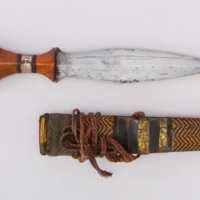 Balaraw Dagger, word and clues
Balaraw Dagger, word and clues
These two daggers in storage at the Metropolitan Museum of New York are called badayaw (or bayadaw) or badaw, a cognate of the Tagalog and Cebuano balaraw...
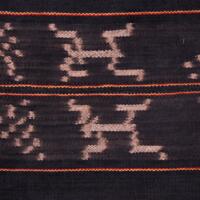 Warp Ikat: breadth and depth
Warp Ikat: breadth and depth
Two selections come together in this exhibit. One is a textile which is among the Philippine collection at the British Museum…
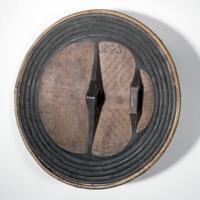 Esoteric Texts: An Exercise in Co-producing Knowledge
Esoteric Texts: An Exercise in Co-producing Knowledge
This round, wooden shield — in the photograph, the inner face is shown, where the wielder's handle is affixed …
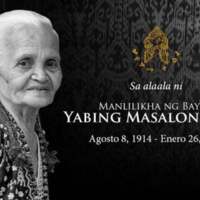 Fu Yabing Dulo, A Living National Treasure
Fu Yabing Dulo, A Living National Treasure
Warp ikat-dyed abaka, a panel generally referred to as tabih amlatu by the Blaan. Tabih is a widely dispersed Austronesian word for cloth that wraps the body; and amlatu is Blaan for one hundred, referring to the number of warp threads involved in…
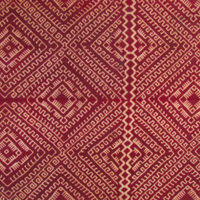 Tik Techniques and Ethics
Tik Techniques and Ethics
Tritik-dyed cloth”Banda para llevar al niño” (cloth for carrying an infant), according to the notes of José Rizal, who collected the piece and donated it in 1888. Ethnological Museum of Berlin. Place of Origin: Mindanao. Acquired: 1888. Materials:…
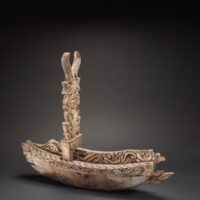 Grave markers. At sea
Grave markers. At sea
Grave marker from the Sulu Islands. Probably 19th or early 20th century. Wood. 119cm high. Fowler Museum at University of California in Los Angeles It is possible, from one point of view, for one kind of burial ground to be the most beautiful on…
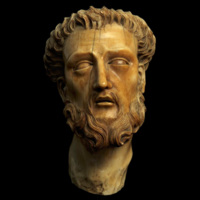 Provocative Beauty
Provocative Beauty
Francis Xavier had only been deceased 78 years, and had only been canonized as Saint for 18 years, when this bust was created in Manila in 1630. The realistic assumption is that an individual relocated to Binondo from the fringes of the Middle Kingdom...